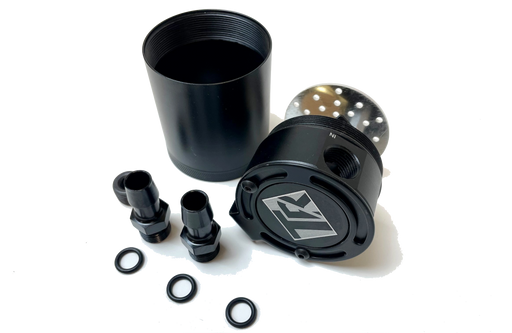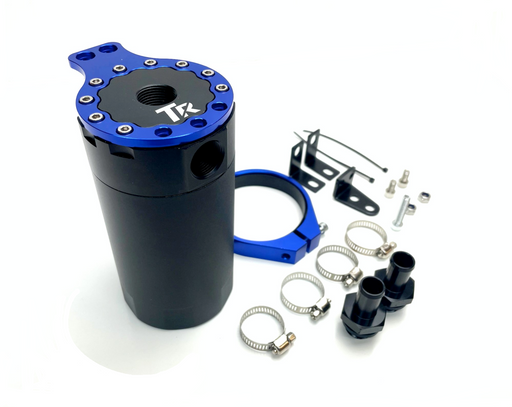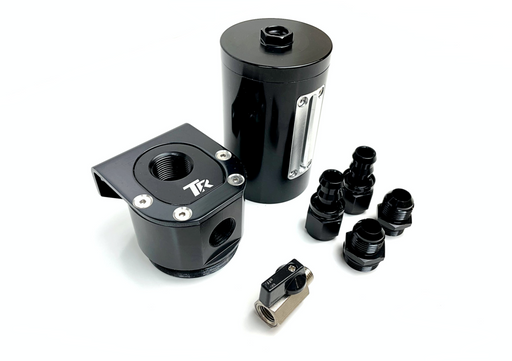Filters
Oil Catch Can | Oil Separator Reservoir Tank
-
 Sale
Original price $37.95Current price $29.72
Sale
Original price $37.95Current price $29.72TR Stealth Oil Catch Can | Oil Separator Tank
This is a MUST HAVE for all direct injected vehicles as it helps to prevent oil being circulated back into the intake and depositing on the top of ...
-
 Sale
$79.95
Sale
$79.95TunerRack Premium 2-Port Baffled Oil Catch Can Oil Separator Reservoir/Tank
Get one of the best oil catch cans on the market! This oil catch can will intercept and collect oil and moisture blow by gases from PCV valve or en...
-
 Sale
$149.95
Sale
$149.95TunerRack Heavy Duty 2-Port Oil Catch Can Oil Separator Reservoir/Tank kit.
Improve engine performance and prolong engine longevity with the TunerRack Heavy Duty 2-port oil catch can. Designed for high pressure applications...
Frequently Asked Questions
If you have questions regarding oil catch cans, oil separators, and more, we have the answers. See the most frequently asked questions from our customers below.
What are blow-by gases?
In a standard four-stroke engine, there's an intake stroke to let the air-fuel mixture into the cylinder followed by the compression stroke to compress the air-fuel mixture. Afterward, the power stroke occurs when the spark from the spark plugs ignites the mixture and forces the piston back into the cylinder. The final stroke is the exhaust stroke that pushes the exhaust gas out of the cylinder. During the compression stroke, a large amount of pressure is created that can allow a small amount of air to escape from the piston rings. This escaped gas is referred to as blow-by gases. The higher the rotations per minute (RPM) your engine spins, the more blow-by gases it will expel. However, every engine has a positive crankcase ventilation (PCV) system that vents the crankcase and blow-by gases to route them back into the engine's combustion chambers to safely burn them. Although, these gases can cause sediment and carbon accumulation around the valve train and intake system.
Why do I need an oil catch can?
Every PCV system functions similarly. There is a PCV breather valve on top of the engine valve cover to vent blow-by gas through a hose and into the intake manifold to circulate it back into the engine. This is an effective way to get the oil-fuel mixture out of the engine. However, the constant re-circulation and re-burning can lead to sediment and carbon accumulation around the engine's valves. This accumulation is more present in direct injection engines as they spray fuel directly into the combustion chamber. The best solution is to use an oil catch can. The oil catch can has a filter and baffles with two hoses that connect to the valve cover and intake manifold. When oil blow-by happens, the mixture is sent into the oil catch can where it filters it and circulates the air back into the combustion chamber. As a result, your engine will have cleaner valves and combustion chambers.
Are oil catch cans legal?
This question comes up frequently due to the varied smog laws from state to state. In states where vehicle inspections are mandatory, vehicles are required to have a closed PCV system. Therefore, having oil catch cans installed may violate the original equipment manufacturer's (OEM's) intended PCV system design. However, catch cans will drastically improve your car's performance and longevity. So, check with your local state laws to ensure you're able to have this beneficial auto part on your car.
To lower 48 on all non-freight items from $150 and up

Quality items for less.
Exclusive clearance deals and offers.

5-star customer reviews. Your satisfaction is important to us.

Online & walk in support.




